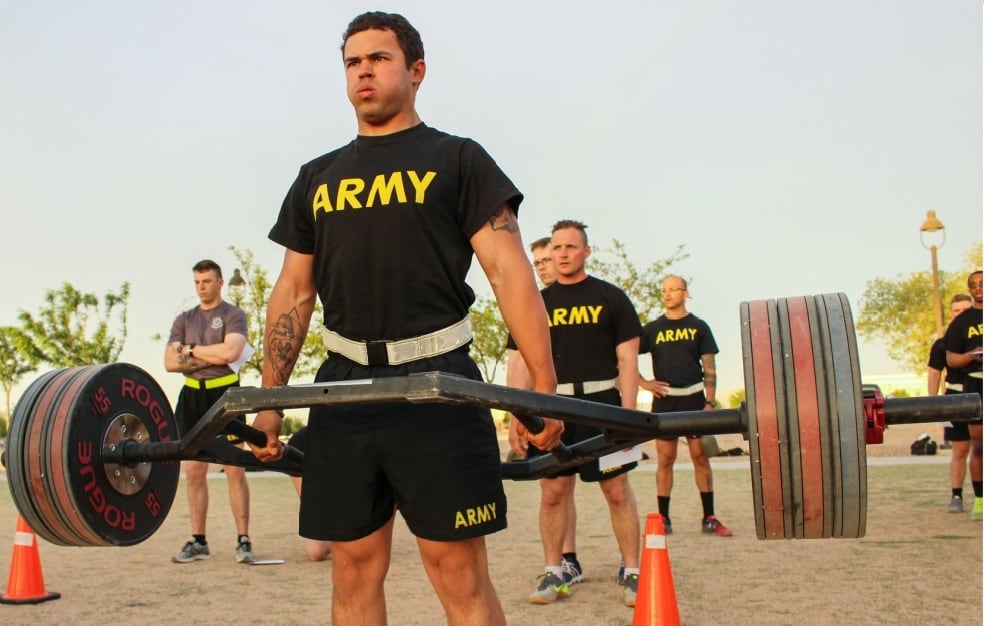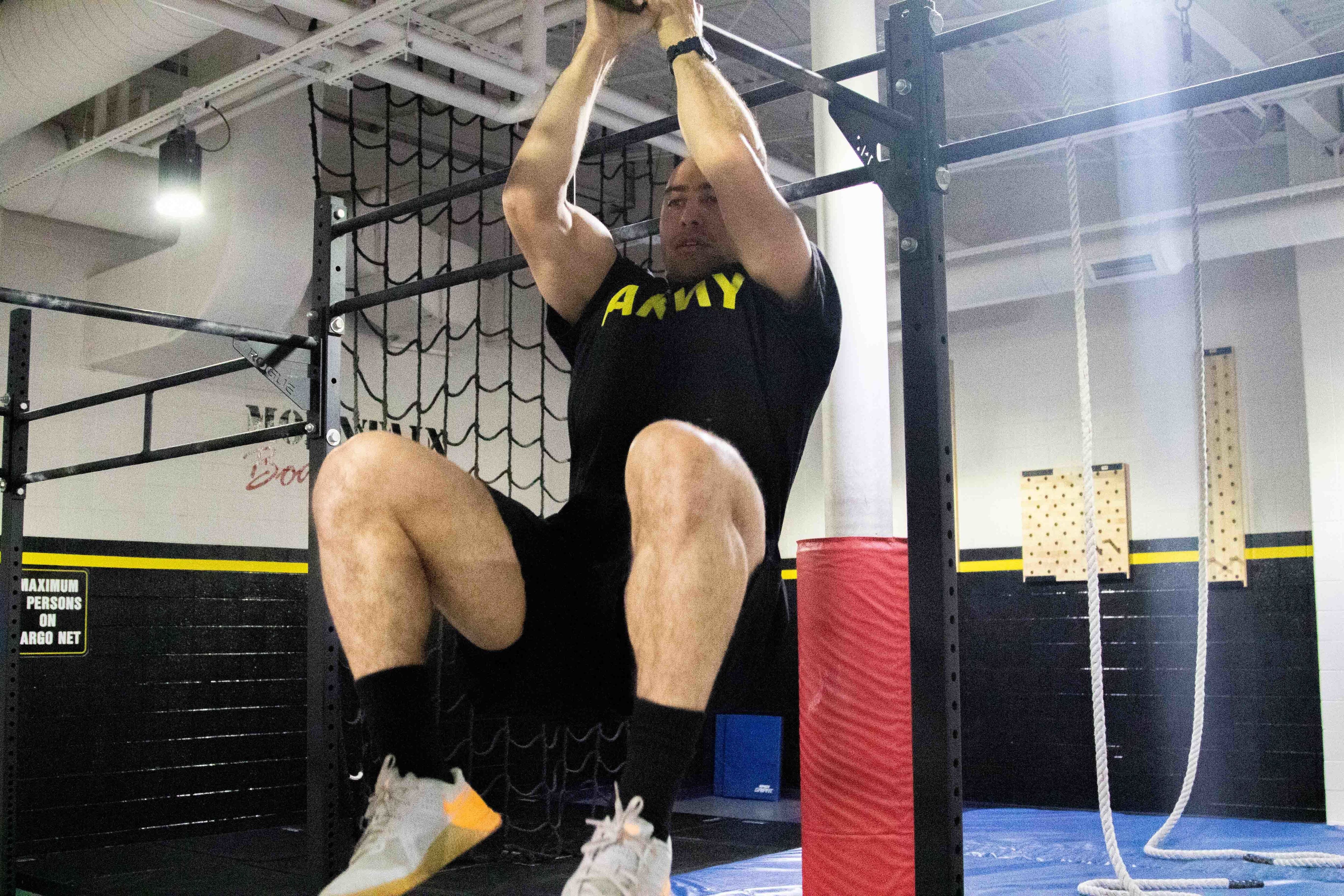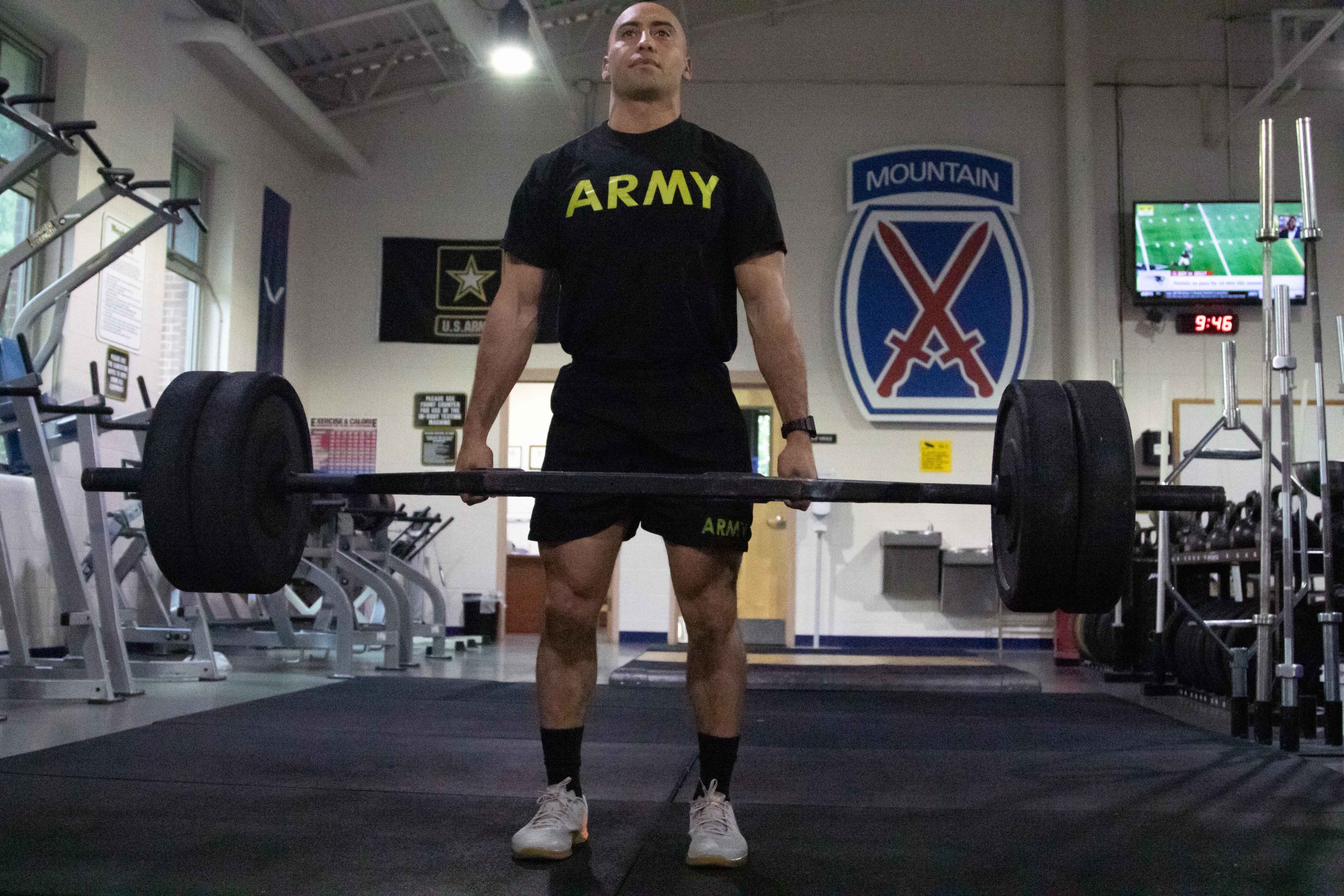The Army’s 10th Mountain Division says that one of their infantrymen was the first enlisted soldier in the service to max out the Army Combat Fitness Test.
Spc. Juan Gonzalez, assigned to 1st Battalion, 32nd Infantry Regiment, 1st Brigade Combat Team, recently got the maximum score on the ACFT, making him the second soldier in the Army to do so, and the first enlisted one.
“We confirmed it with CIMT this morning,” 10th Mountain Division spokesman Lt. Col. Kamil Sztalkoper said, using the acronym for the Center for Initial Military Training, which is the test proponent.
Gonzalez, 29, has a background in wrestling and Olympic lifting, even competing nationally prior to joining the service.
“The interval training that I did prior to the military and what I do now has really helped,” Gonzalez told Army Times.
During the sprint-drag-carry, for instance, when some of the other soldiers were exhausted, it felt pretty normal for Gonzalez.
He recommends other soldiers train their legs and condition their bodies through interval training to prepare for the new test.
“I would probably do intensive workouts that correlate with their legs to get their heart rate up so they’re not surprised with how they feel during the sprint-drag-carry,” he said. “A lot of people are not doing leg-intensive workouts and that kind of shocks them, takes them by surprise.”
People who do high-intensity interval training will probably end up with a better score than people who do traditional workouts, he added.
“My only rule when I work out is I lift something heavy once a day and then everything else is random,” Gonzalez said. “I do legs just about every day.”
“If I do run, it isn’t anything over two miles, usually, unless there’s like a test here at work," he noted. "Mostly I do a lot of intervals on the rowing machine, the assault bike and the skier [machine].”
RELATED

One new exercise introduced with the ACFT is the hex-bar deadlift. It hits the leg muscles hard, but also targets other muscle groups.
“Deadlifts are one of the best exercises you can do as long as you are doing them properly,” Gonzalez said. “It’s basically a full body workout. ... That will definitely help them in the core strength, back strength, leg strength ... it will correlate with the ball throw and everything else.”
Soldiers should also work on their hip flexers and grip strength to prepare for the knee-tucks, especially if they aren’t used to pull-ups, he explained. Weighted flutter kicks and resistance bands are both useful in preparing the hip flexers for the new test.
In his current platoon, Gonzalez does a lot of rucking, so the new fitness correlates better with the leg strength required than the old one.
“The deadlift keeps your legs strong, your core strong, your back strong,” he said. “That’s everything you need to ruck.”
“And you also have the stamina to keep walking, so the 2-miler tests your stamina as well,” he added.

As far as diet, Gonzalez is a fan of carbs, but that doesn’t mean he scarfs down Big Macs. He generally eats clean, and keeps his meals simple: "white rice, a protein and then just some vegetables and that’s it.”
“I eat white rice with all of my meals because of how much I work out throughout the day," he explained. "I have to keep my calorie intake up because I lose a lot of weight really quick and I get small really quick.”
For soldiers who don’t have access to a lot of equipment to practice for the ACFT, Gonzalez recommended many of the same ad hoc methods the larger Army has said help. Ammo cans, water-filled jerrycans and sandbags, for instance, can be used as weighted items in place of a trap bar and plates, medicine balls and kettle-bells.
Additionally, for the deadlift, you don’t need to necessarily train on the hex bar.
“The only time I lift with a hex bar is when I take the ACFT,” Gonzalez said. “You can lift with five-gallon jugs. You can always use a replacement.”
The Army is buying $70 million worth of ACFT equipment that will be divvied out to units across the force in January.
The service plans for all the equipment to be in place for active, Guard and Reserve units by May, Maj. Gen. Lonnie G. Hibbard, commander of the Center for Initial Military Training, previously told Army Times.
For Gonzalez, the new test lines up well with the workouts he already does, and that should help him as he gets ready for the next steps in his Army career.
“I’m looking at getting to Ranger school soon, and going Special Forces would be awesome," he said in an Army news story. “I want to be the best I can be."
Kyle Rempfer was an editor and reporter who has covered combat operations, criminal cases, foreign military assistance and training accidents. Before entering journalism, Kyle served in U.S. Air Force Special Tactics and deployed in 2014 to Paktika Province, Afghanistan, and Baghdad, Iraq.





